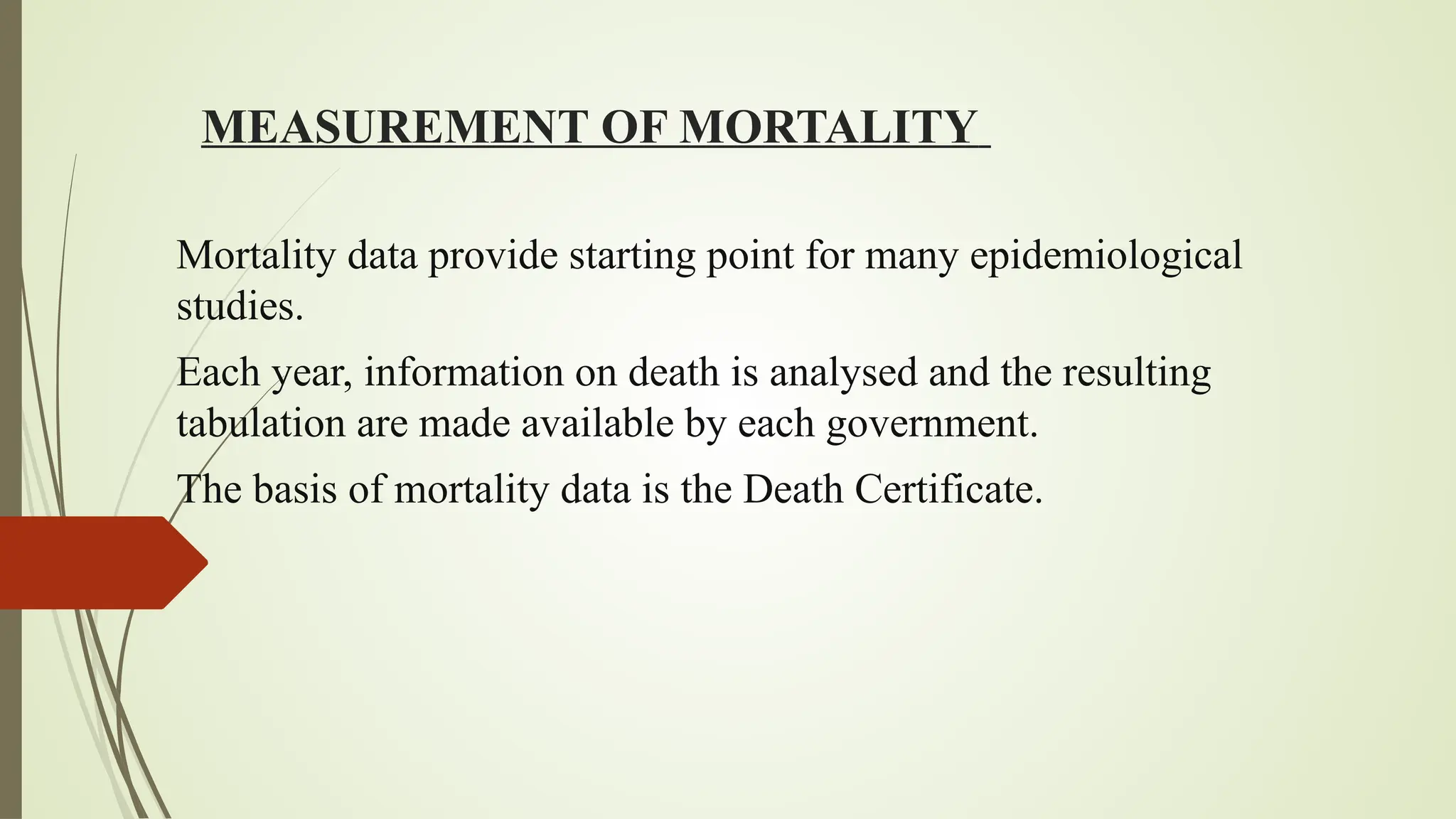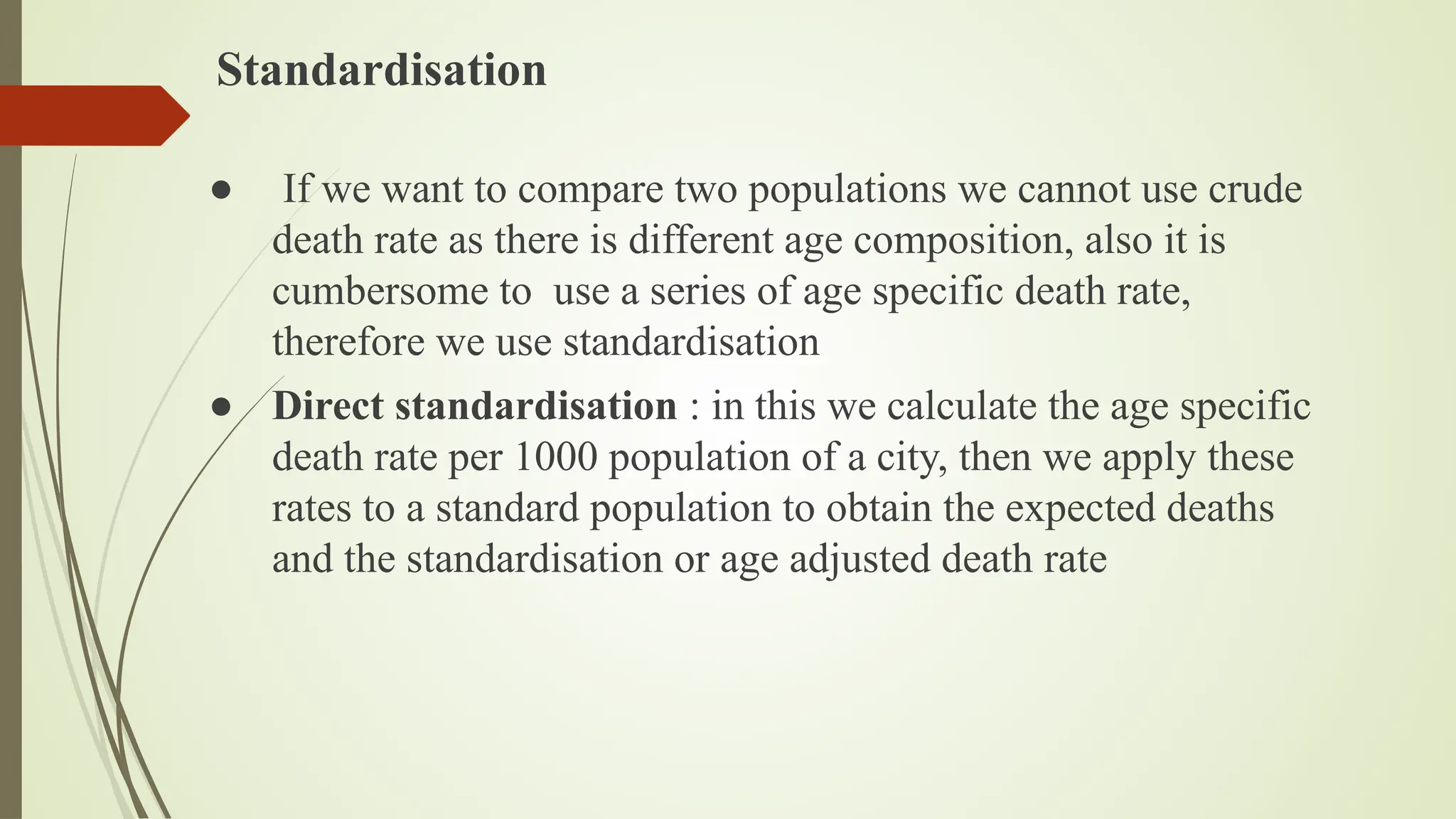The document discusses the tools of measurement in epidemiology, focusing on definitions, disease frequency components, rates, ratios, proportions, and mortality and morbidity measurements. It describes various mortality rates, including crude death rate and specific death rates, and emphasizes the importance of standardization for comparison purposes. Additionally, it covers morbidity definitions, incidence and prevalence rates, as well as their relationships and implications for public health.



























